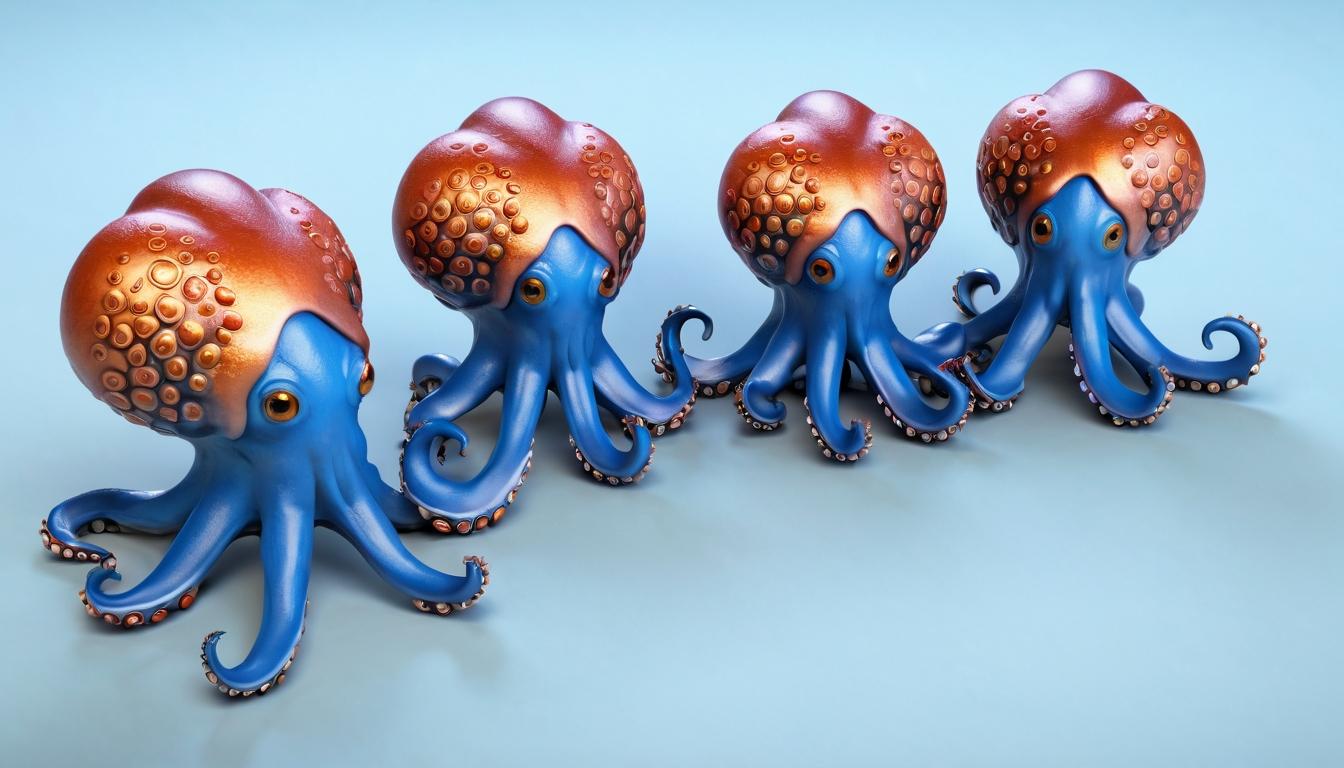Beneath the ocean's surface, in the shadowy realms where sunlight barely penetrates, lives one of nature's most extraordinary creations—the octopus. These eight-armed marvels have been captivating marine biologists and casual observers alike with their otherworldly abilities and bizarre biology. What makes these cephalopods so fascinating isn't just what we see on the surface, but the incredible secrets hidden within their gelatinous bodies.
Consider this: an octopus doesn't just have one heart—it has three. Two of these hearts work exclusively to pump blood through the gills, while the third circulates oxygen-rich blood to the rest of the body. When an octopus swims, the heart responsible for systemic circulation actually stops beating, which explains why these creatures prefer crawling to swimming. It's an evolutionary adaptation that reveals how energy conservation drives even the most complex biological systems.
The blood that flows through these three hearts isn't red like ours—it's blue. This cerulean fluid gets its color from hemocyanin, a copper-based protein that carries oxygen throughout the body. While human hemoglobin uses iron to bind oxygen, turning our blood red, the octopus's copper-based system proves more efficient in cold, low-oxygen environments. This blue blood allows them to thrive in depths that would leave other creatures gasping for breath.
Perhaps most astonishing is the distributed intelligence system that makes octopuses unique in the animal kingdom. Two-thirds of an octopus's neurons aren't in its brain—they're in its arms. Each tentacle contains such complex neural circuitry that it can essentially "think" for itself. This explains why an amputated octopus arm can continue to grasp and manipulate objects for up to an hour after separation. The arms can taste what they touch through chemoreceptors, allowing the octopus to identify food or danger without bringing objects to its mouth.
Their camouflage abilities border on the supernatural. Using specialized pigment cells called chromatophores, an octopus can change its color, pattern, and even texture in less than a second. These cells expand and contract like microscopic pixels, creating living high-definition displays that mimic everything from coral reefs to sandy bottoms. But the deception goes deeper than appearance—octopuses can alter their body shape to resemble rocks, plants, or even other animals, making them the ultimate masters of disguise.
The intelligence of these creatures manifests in ways that continue to baffle scientists. Octopuses have been observed using tools—a behavior once thought exclusive to humans and primates. They've been documented carrying coconut shells to use as portable shelters, assembling rocks to barricade their dens, and even using jellyfish tentacles as weapons. In laboratory settings, they've solved complex puzzles, opened childproof containers, and demonstrated both short- and long-term memory.
Their reproductive strategies are equally remarkable. After mating, the female octopus becomes a model of maternal dedication—and sacrifice. She guards her eggs ferociously, cleaning them and blowing oxygen-rich water over them for weeks or even months. During this vigil, she stops eating entirely, eventually wasting away as she gives everything to protect her offspring. When the eggs finally hatch, she dies, having completed her biological purpose.
Even their escape mechanisms read like science fiction. When threatened, octopuses can release a cloud of ink containing melanin—the same pigment that colors human skin and hair. But this isn't just a simple smokescreen; the ink contains tyrosinase, a compound that blinds and dulls the sense of smell in predators, giving the octopus crucial seconds to escape. Some species can even detach an arm as a distraction, knowing it will regenerate later.
The common octopus has about 500 million neurons—similar to a dog—but their cognitive abilities seem organized in ways we're only beginning to understand. They display distinct personalities, with some individuals being bold and exploratory while others remain cautious and reserved. They've been known to play with objects, recognize individual humans, and even exhibit what appears to be curiosity about their environment.
What makes the octopus particularly extraordinary is its evolutionary path. These invertebrates split from our own vertebrate lineage around 500 million years ago, developing intelligence and complex behaviors through a completely different biological blueprint. Studying them isn't just about understanding marine life—it's about exploring an alternate evolutionary pathway to intelligence itself.
As ocean temperatures rise and habitats change, understanding these remarkable creatures becomes increasingly urgent. Their unique biology makes them particularly vulnerable to environmental changes, yet their adaptability gives hope for their survival. Each discovery about octopuses reveals not just the secrets of the deep, but fundamental truths about the possibilities of life itself.
The secret lives of octopuses: three hearts, blue blood, and other astonishing facts

